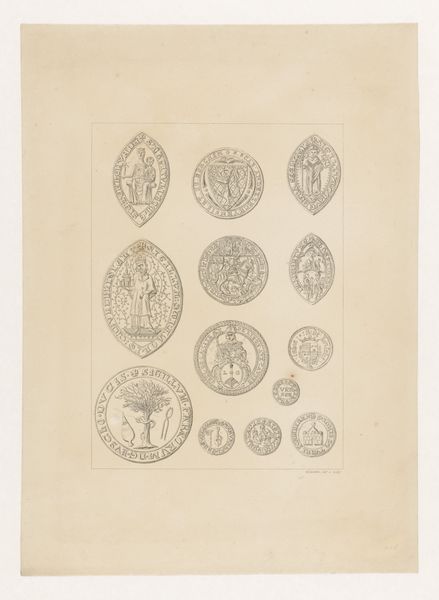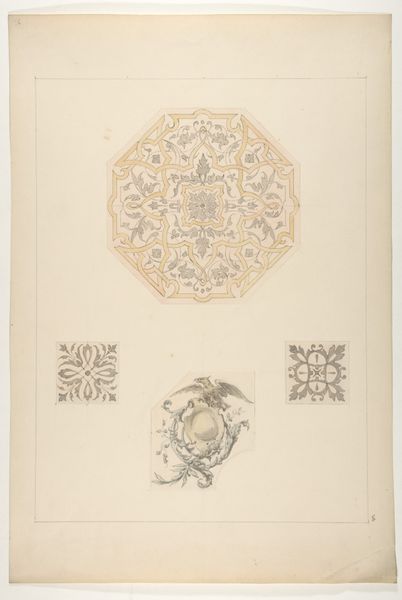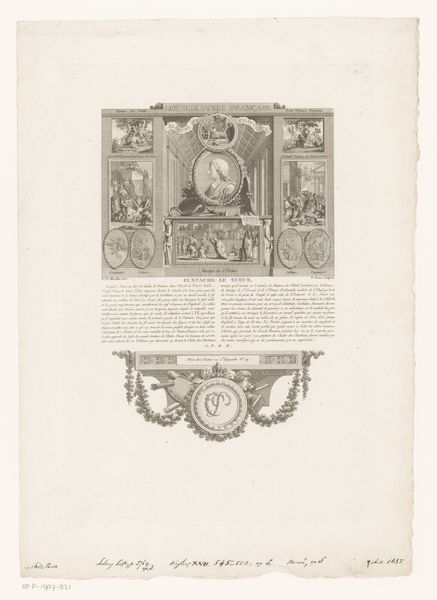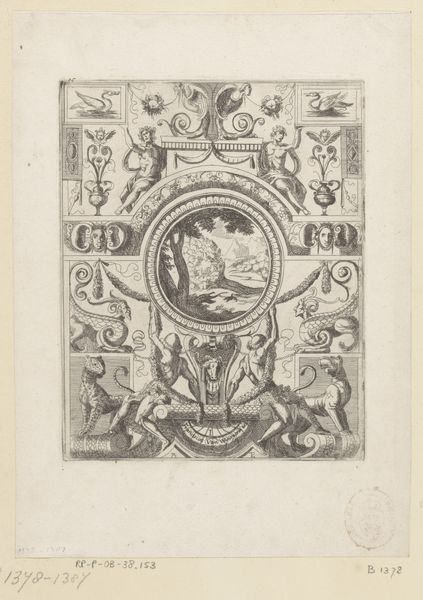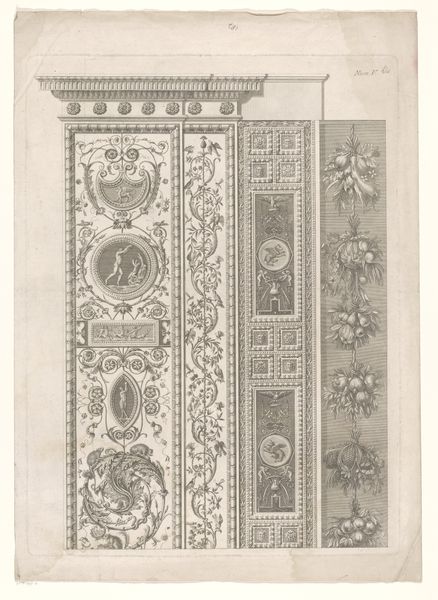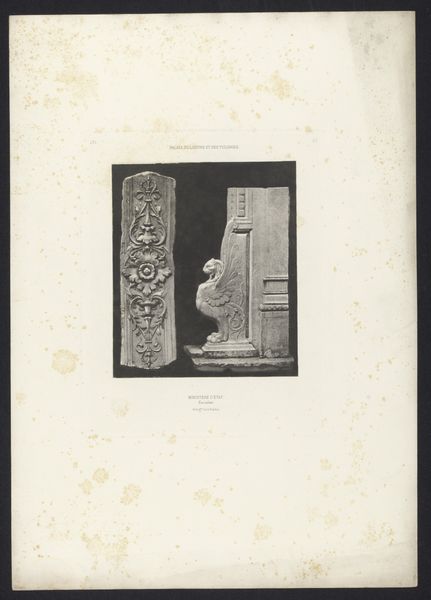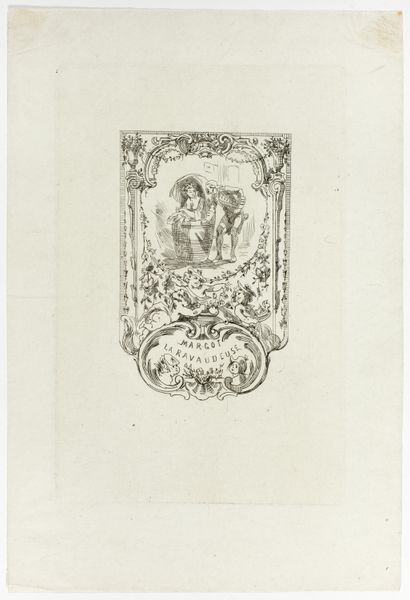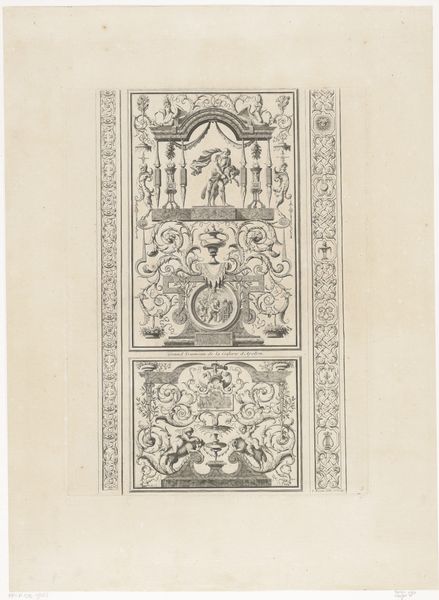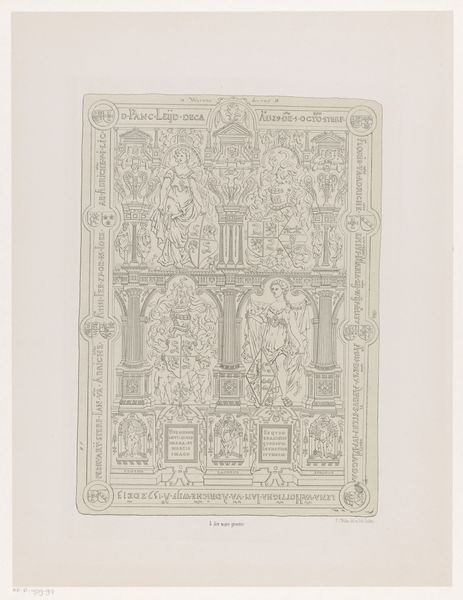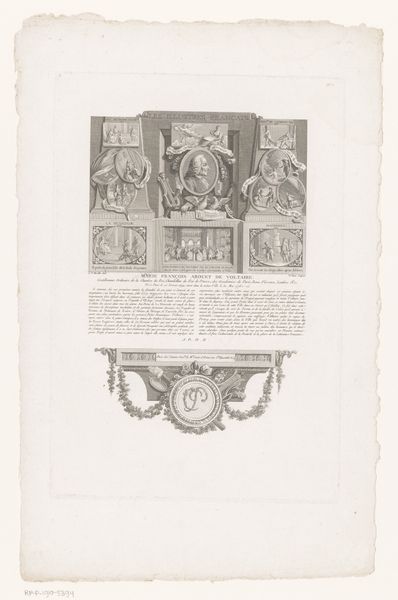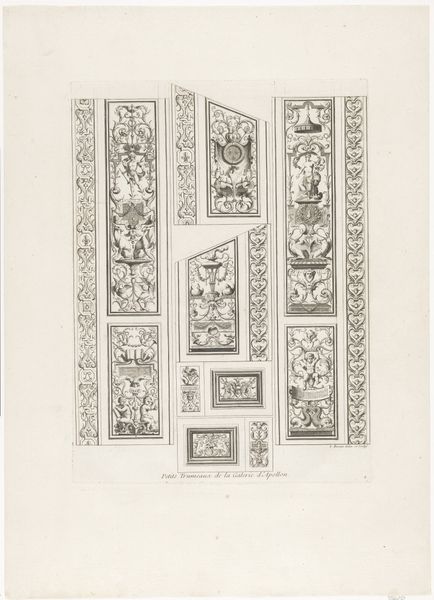
print, engraving
#
medieval
#
parchment
# print
#
history-painting
#
engraving
Dimensions: height 322 mm, width 240 mm
Copyright: Rijks Museum: Open Domain
Editor: This is a print from between 1855 and 1857 depicting a book binding from the Bethlehem monastery near Doetinchem, created by Tiemen Hooiberg. It feels… almost like an architectural rendering rather than a piece of fine art, doesn’t it? What can you tell me about this particular bookbinding depicted? Curator: What I notice is that this isn’t about pure aesthetics but the materiality and social context that create it. It's fascinating to think about the process: from the creation of the parchment, possibly animal-derived, to the labor involved in the engraving and printing. How do these material realities inform the image, or, rather, *images* it conveys? Editor: That’s an interesting angle. I was so focused on the religious iconography, like the Crucifixion and what look like Evangelist symbols. So you’re saying the real message is in the making of the thing itself, and what materials were needed to assemble it? Curator: Precisely! And consider where it was made – a monastery. The resources available, the skills present within the religious community, and their specific needs dictated not only what the book would contain, but how it would be bound and decorated. We can think about the gold paint or dye, what meaning it might carry. Editor: So the print becomes almost a document of the monastery's means and priorities? Is the value more in the evidence of labour and material choices than in the subject matter itself? Curator: It becomes a window into that world, certainly. Think about it – the availability of certain pigments, the skill in metalworking and engraving… these things reflect trade networks, resource accessibility, and the artistic training available to the monks. It all contributed to the final product we see here. What did printing the document mean at the time, what were they selling, sharing or promoting by doing that? Editor: I see your point. It’s about deconstructing the artwork into its constituent parts, both physical and societal, to understand its true value and place in history. Thank you, that really shifts my perspective! Curator: And, hopefully, a greater appreciation for the layers of meaning embedded in seemingly simple things. It is a document reflecting much of the world around the monastery.
Comments
No comments
Be the first to comment and join the conversation on the ultimate creative platform.
